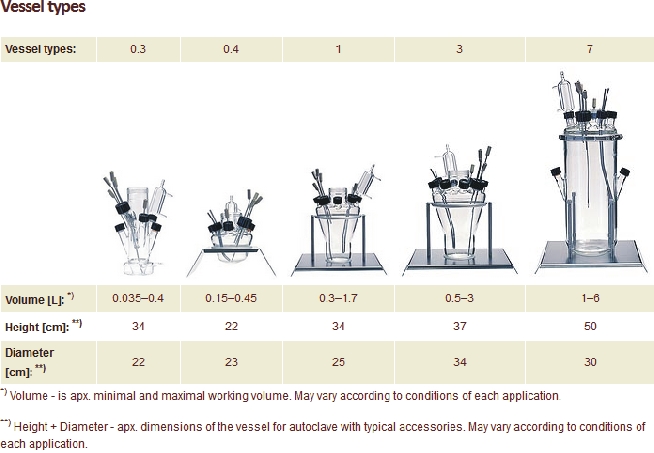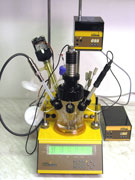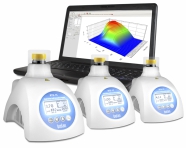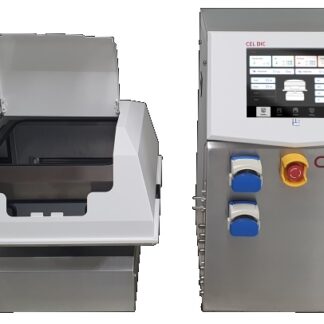Description
This bioreactor is a special version of the fermentor MINIFOR for cell culture.
Vessels
A broad volume spectrum from 35 ml to 6000 ml is possible with just one basic unit. Since no expensive top plates are used, the cost of passing from one volume vessel to another is several times lower than in other systems.

Sterility
A strong silicone membrane isolates completely the vessel from the environment. The sterility is equivalent to magnetic coupling but is not so complex and much less expensive. All o-rings have been replaced by large silicone stoppers with multipoint seals. They can be reused more time.
Agitation
Up and down movement of one or more stirring discs provides gentle but efficient mixing both in horizontal and vertical direction. A special proprietary disc form of the new elastic Fishtail stirrer (mimics the fish tail) eliminates cutting edges and micro-eddies formed on all common impellers. Therefore the cell viability is maintained.
Heating
The infrared radiation lamp on the bottom of the vessel produces extremely gentle and regular sun like heating of the culture. It produces natural convection even without agitation. No hot spots are formed at any culture volume. The adjusted temperature can be attained in a short time and can easily be kept constant. There is no baffles or no heating system in the vessel. So, the cleaning and the assembling is very easy. Furthermore the sight into the vessel is not hindered.
Aeration for very sensitive cells
A spiral covered by a thin wall of air containing silicone tubing is fixed on the axis of the stirrer. The up and down movement of the spiral displaces oxygen saturated layers of the culture and simultaneously produces a gentle movement of the medium. This moving spiral system is more efficient than common stationary systems.
Gas flow control
A new gas flow meter and controller MASSFLOW has been developed. The precise massflow measurement is unaffected by pressure and temperature variations. It supplies a high quality signal, which is used to control a proprietary proportional valve for a precise regulation of the gas flow rate. The gas volume can be measured, totalised and recorded for the control of metabolic activity of the culture.
pH and pO2 control
The pH of the culture can be regulated with the carbon dioxide concentration. The MASSFLOW instrument is just plugged into the acid pump socket on the rear of the MINIFOR and if necessary the nitrogen regulating MASSFLOW to the base pump socket. The bioreactor will keep both pH and pO2 on the preset value automatically.
Redox potential measurement
With an additional electronic box connected to the fermentor it is possible to measure the redox potential (-999 to 999 mV) of the solution. The electrode can be sterilised.
Advantages
MINIFOR is very compact: The reactor is the most compact bioreactor available. Nevertheless, the ports are well accessible from all sides.
Fast to set up: Special system and vessel construction of MINIFOR allows the fastest set up when compared to all other systems on the market.
Self-cleaning gas microsparger: Rich and salt containing media will inevitably dry out in the openings of a sparger tube. Solid deposits may block the gas entry. A special microsparger has been developed to eliminate this problem.
Continuous culture: The weight of MINIFOR can be kept constant by using a special weighing module placed under the front edge of MINIFOR. The harvesting pump will keep automatically the volume of the culture constant. Continuous cultures allow a considerable increase of productivity.
INTEGRATOR: When the integrator is switched to pumps or MASSFLOW gas flow regulator, their activity can be followed as a function of time. The data obtained in this way give additional information about the culture; it’s growth kinetics and reproducibility.
PC control: Easy to use, complete software FNet or Siam for up to six MINIFOR units. All these features result in a dramatic improvement of the cell culture, precise control of preset parameters and their easy documentation.


